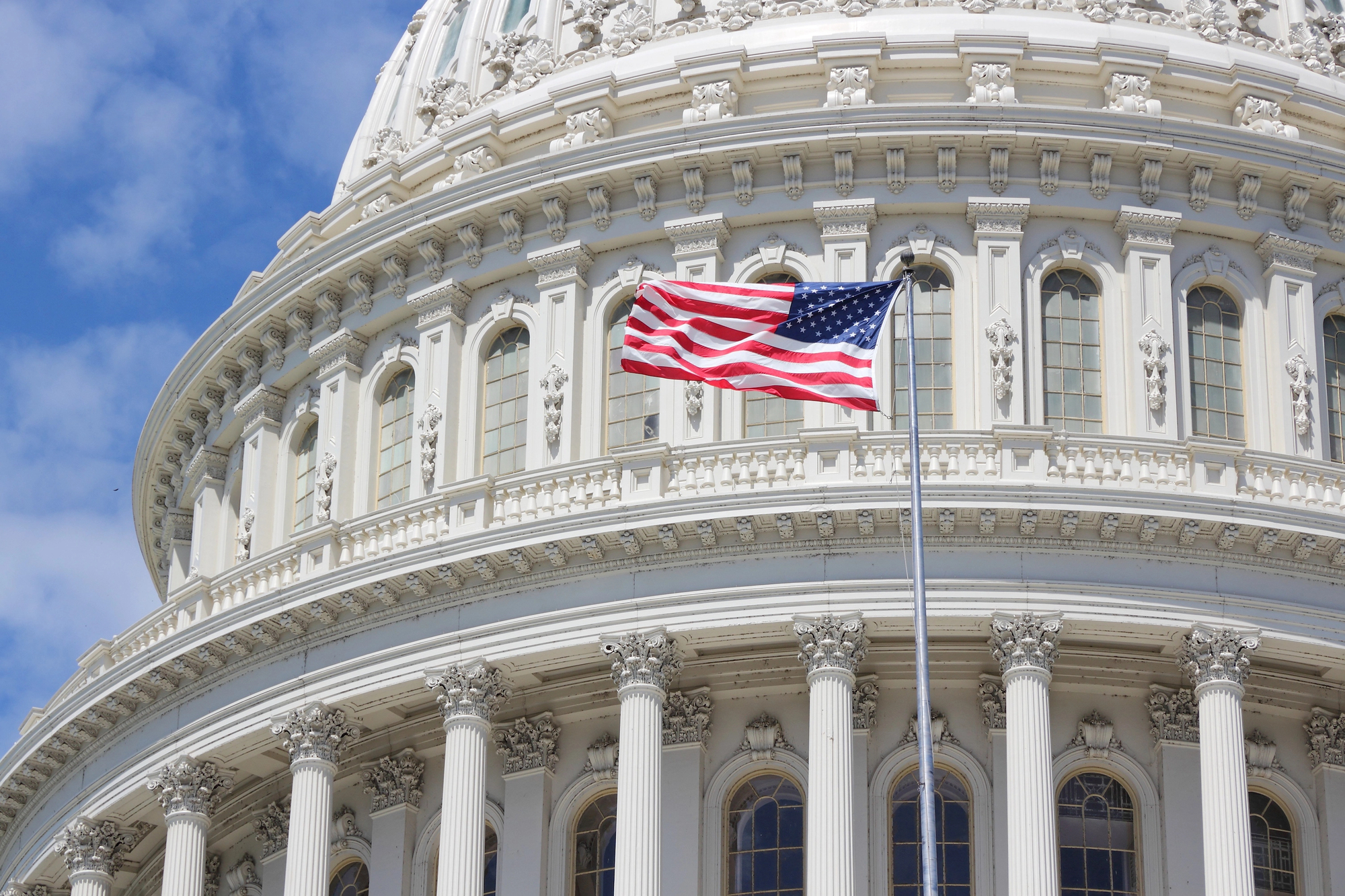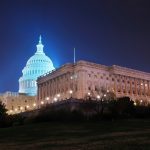Congressional elections in the United States decide who will represent each state in the House of Representatives and the Senate. Every two years, voters across the country participate in these elections, influencing how laws are created and which political parties hold power. The structure of Congress consists of two chambers: the House, with representatives distributed according to population, and the Senate, with two senators from each state.
The process of congressional elections includes drawing district boundaries based on census data, selecting party candidates, and casting votes through well-established legal procedures. Election outcomes can shift the balance of power and affect decisions that impact everyday life for millions.
Key Takeaways
- Congressional elections shape the composition and direction of Congress.
- Representation is determined by districts and state population.
- Voting results directly impact national policies and governance.
Overview of Congressional Elections
Congressional elections form the backbone of legislative representation in the United States. They determine the makeup of the House of Representatives and the Senate, impacting federal policies, lawmaking, and oversight.
Definition and Importance
Congressional elections select members for the two chambers of the United States Congress: the House of Representatives and the Senate. The House consists of 435 members allocated by state populations, while each state sends two senators to the Senate, regardless of size.
These elections decide who creates and amends federal laws, controls the budget, and checks the executive and judicial branches through oversight and confirmation powers. Voters elect representatives who express their concerns and preferences at the national level.
The outcome shapes the direction of national policy and can affect everything from taxation to foreign relations. Congressional representatives also respond to constituents’ issues and secure resources for their states and districts.
Constitutional Foundation
The U.S. Constitution establishes the framework for congressional elections. Article I lays out the structure of both the House and Senate, including eligibility, terms of office, and selection processes.
House members must be at least 25 years old, U.S. citizens for seven years, and residents of the state they aim to represent. Senators must be at least 30, citizens for nine years, and state residents at the time of election.
Apportionment of House seats is adjusted every ten years following the census, as mandated by the Constitution. States are responsible for setting up congressional districts and conducting the elections, but federal law sets broad standards to protect the right to vote.
Timeline and Frequency
Congressional elections follow a fixed schedule. All House seats are contested every two years in even-numbered years, ensuring rapid turnover and responsiveness to public opinion.
Senate elections are staggered, with roughly one-third of the 100 seats up for election every two years. This results in senators serving six-year terms while providing greater continuity in the Senate.
These elections typically occur on the first Tuesday following the first Monday in November of even-numbered years. Midterm elections take place between presidential election years and often signal changes in political momentum. All states and districts must hold their congressional elections according to this federal timetable.
Structure of the United States Congress
The United States Congress is the legislative branch of the federal government. It consists of two separate chambers: the House of Representatives and the Senate.
Differences Between the House and Senate
The House of Representatives has 435 voting members, with seats divided among the states based on population. Each representative serves a two-year term and is elected from a specific district. States with larger populations have more representatives, while every state has at least one.
The Senate is made up of 100 members, two from each state regardless of size. Senators are elected for six-year terms. Senate elections are staggered so that about one-third of the seats are contested every two years. This structure is designed so that large and small states have different forms of representation in Congress.
Leadership in each chamber is structured differently. The Speaker leads the House, while the Vice President of the United States serves as President of the Senate, with most duties delegated to the Senate’s President pro tempore or party leaders.
Roles of Representatives and Senators
Representatives in the House initiate all revenue-related bills and can bring impeachment charges against federal officials. They focus on issues that are often more directly tied to their districts and must regularly communicate with constituents due to their shorter terms.
Senators confirm presidential appointments, such as federal judges and cabinet members, and have the power to ratify treaties. They also act as the jury in impeachment trials. Their longer terms can allow for more continuity and stability in representing state interests at the federal level.
Both representatives and senators introduce and vote on federal legislation. They participate in committees that handle specific areas such as finance, defense, and education. While their roles sometimes overlap, the differences in term length, responsibilities, and scope of representation define how each carries out their duties in Congress.
Apportionment and Representation
Congress divides seats in the House of Representatives among the states based on population counts. Standardized processes make seat allocation responsive to demographic shifts while maintaining representation grounded in the Constitution.
Population and the Census
Every ten years, the United States Census Bureau conducts a national headcount as required by Article I of the Constitution. The primary goal is to determine the population of each state with as much accuracy as possible.
All residents, regardless of citizenship status or age, are counted in the census. This total population then becomes the data used for congressional apportionment. Census results also play a role in drawing congressional districts within each state, aligning representation with actual population changes.
Population changes—such as growth, decline, or shifts between regions—can directly impact the number of seats a state receives. This system aims to reflect genuine demographic change and reinforce representative government based on current numbers.
Allocation of Congressional Seats
There are 435 seats in the U.S. House of Representatives. The Constitution mandates that every state has at least one seat, no matter its population.
After each census, apportionment uses a formula set by federal law to divide these seats among the 50 states. States with larger populations receive more seats, while those with smaller populations receive fewer. The allocation begins with each state getting one seat, and the remainder are distributed according to population.
Once apportioned, states themselves are responsible for drawing the boundaries of their congressional districts. These districts are designed so that each has roughly equal population, helping sustain the principle of equal representation. This cyclical system helps keep congressional seats aligned with the nation’s shifting population.
Congressional Districts and Redistricting
Congressional elections depend on district boundaries set according to population changes. State legislatures and census data play central roles in drawing and updating these districts.
District Drawing and Redistricting
Every ten years, after the U.S. Census, congressional districts are redrawn to reflect shifts in population. This process is called redistricting. Each state is divided into a specific number of districts, assigned through apportionment based on population—states with more people get more districts.
District lines influence which voters are grouped together and who represents them in Congress. The boundaries can affect election outcomes by changing the mix of voters in a district. States aim to create districts that have roughly equal populations, following the principle of “one person, one vote.”
Population data from the census guide the redrawing process. Major changes in districts can impact who has an advantage during congressional elections. Some states use independent commissions while others rely on government officials or the state legislature to draw lines.
Role of State Legislatures
In most states, the state legislature leads the redistricting process for congressional and legislative districts. They propose and approve new maps based on the latest census figures. Their decisions determine how communities are grouped and directly affect congressional representation.
Partisan interests can shape how boundaries are drawn, sometimes leading to gerrymandering—drawing districts for political advantage. Rules and requirements for redistricting vary by state, including rules about public input and transparency.
Some states have taken steps to reduce legislative control by using bipartisan or independent commissions to draft district maps. Despite these efforts, state legislatures remain central to how most districts are mapped, shaping the foundation for congressional elections.
How Voting Works in Congressional Elections
Voters have a direct role in selecting members of Congress through the popular vote in federal elections. The process for participating involves meeting specific eligibility rules and following state procedures for voter registration and ballot casting.
Eligibility and Voter Registration
U.S. citizens must meet certain requirements to vote in congressional elections. Voters need to be at least 18 years old on Election Day and reside in the state or district where they vote. Some states allow 17-year-olds to register earlier if they will be 18 by the general election.
State governments handle voter registration. To participate, individuals must register in advance unless they live in a state that offers same-day registration. Deadlines usually fall several weeks before Election Day. Certain groups, such as non-citizens or people with specific felony convictions, are barred from voting under federal or state law.
Registration can be completed online, by mail, or in person at designated locations like the Department of Motor Vehicles or local election offices. Once registered, voters receive instructions about their assigned polling place or information about voting by mail if permitted.
Popular Vote Process
Congressional elections are determined by the popular vote. Every eligible registered voter in a district can cast one ballot for their preferred candidate for the U.S. House of Representatives. In Senate elections, voters across the state select among candidates for one of the two Senate seats up for election that cycle.
Votes are counted after polls close on Election Day, which is the Tuesday after the first Monday in November. Election officials tally the ballots, and the candidate with the highest number of votes wins the seat. Unlike presidential elections, there are no electors or Electoral College involved in congressional races.
Election results for congressional seats are typically available within hours or days, depending on state rules and mail-in ballot processing times. Contested results might lead to recounts or legal challenges, but the winner is usually decided by the certified popular vote count.
Political Parties and Election Outcomes
Political parties in congressional elections shape the selection of candidates, influence campaign strategies, and affect how legislative control is decided. Candidate success determines which party holds key positions and guides policy direction in Congress.
Role of Political Parties
Political parties play a central role in congressional elections by nominating candidates and organizing campaigns across the country. Each party selects its candidates through primaries or caucuses, processes which can be open or closed based on state rules. Closed primaries limit participation to voters registered with that party.
National and local party organizations provide campaign resources—funding, strategy, and volunteers. Party affiliation often drives voter decisions, making party branding a significant factor in election outcomes. Parties also help coordinate messaging and recruit volunteers to reach voters.
Coordination enables parties to support their candidates in both the U.S. House of Representatives and the Senate. This unified effort affects not just individual races but the broader balance of power in Congress. The standout role of parties is apparent in competitive or high-profile elections.
Majority and Minority Determination
The outcome of congressional elections directly decides which political party holds the majority in each chamber. After each election, the party with the most seats becomes the majority, gaining control of committee chairmanships and the legislative agenda.
In the House, there are 435 seats. The majority is held by the party with at least 218 seats. In the Senate, the party with at least 51 out of 100 seats forms the majority. The minority party retains influence through committee participation and debate but cannot set the agenda.
Being the majority offers significant advantages in shaping lawmaking, while the minority party focuses on negotiating policy changes and responding to the governing party’s proposals. This system influences every aspect of how Congress operates post-election, from passing bills to leading investigations.
Election Results and Their Impact
Congressional election outcomes settle more than just who holds specific seats. They define legislative direction and exert a direct influence on national governance and priorities immediately after results are certified.
Formation of Congressional Sessions
After each federal congressional election, the winners are sworn in to form the new sessions of the United States Congress. A session typically lasts two years and starts on January 3 of odd-numbered years.
The majority party secures key leadership roles such as the Speaker of the House and Senate Majority Leader. These positions determine the legislative agenda and committee leadership. For example, the majority controls which bills are debated, advanced, or stalled.
Committee assignments are reshaped based on new party compositions. This reshifting can influence which issues get legislative attention, as committee chairs wield substantial authority over hearings and investigations.
Influence on National Leadership
Congressional election results affect the balance of power with the executive branch, especially the president and vice president. If a president’s party holds a majority in Congress, passing legislation and confirming appointments is less complicated and faster.
When control is divided, negotiations and policy compromises become more frequent. The Senate’s majority also plays a direct role in confirming Supreme Court justices and high-level federal appointments.
Veto overrides, impeachment proceedings, and investigations depend heavily on party alignment and majority status in each chamber. The results of congressional elections, thus, play a significant part in shaping the administration’s ability to implement its agenda.
Legal Framework and Recent Changes
Various rules and amendments define the core structure for congressional elections in the United States, while recent legislative changes and court decisions have shaped the process that determines how representatives are chosen for both chambers of Congress. The following describes how the foundation was formed and outlines key legal adjustments.
Constitutional Amendments Affecting Elections
The U.S. Constitution, mainly Article I, Section 4, gives state legislatures the power to set the times, places, and manner of elections for Senators and Representatives, with Congress having the authority to alter those regulations. The 17th Amendment changed how Senators are selected, shifting from state legislatures to direct popular vote by citizens. The 15th, 19th, 24th, and 26th Amendments expanded voter eligibility—removing barriers based on race, sex, poll taxes, and lowering the voting age to 18.
These changes directly altered electoral participation and the mechanisms states use to conduct congressional races. States must now comply with federal standards that prevent discrimination and guarantee open access to the polls.
Notable Reforms and Court Decisions
Election laws continue to adapt, affected by federal statutes, state legislation, and the judiciary. The Voting Rights Act of 1965 remains influential, targeting racial discrimination. Redistricting, as mandated every decade by the U.S. Census, has been repeatedly reviewed by the Supreme Court, which has issued opinions about the legal limits of “gerrymandering” and minority representation.
In recent years, some states have adopted independent commissions to draw district maps, and debates over voter identification, absentee ballots, and mail voting laws have resulted in court cases challenging or upholding changes. Congress and numerous courts maintain active roles in how elections are structured and implemented.





